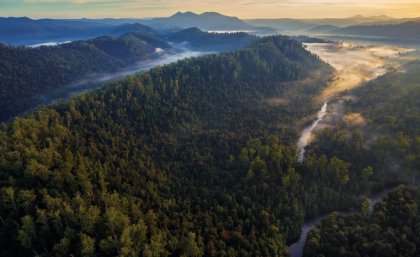
Crowdfunding is helping to protect endangered species such as the African elephant, the black rhinoceros and the Bornean orangutan.
A University of Queensland-led study has revealed the practice is funding conservation worldwide, including in countries with high global conservation priorities, such as Indonesia and Costa Rica.
UQ School of Biological Sciences Fuller Lab PhD candidate Eduardo Gallo-Cajiao said crowdfunding had harnessed the power of the internet to magnify the power of public appeals.
“Raising funds is critical for conserving biodiversity, and anecdotal evidence had indicated that crowdfunding was being used to support a variety of conservation activities,” he said.
“Yet its magnitude and allocation were largely unknown.”
Mr Gallo-Cajiao said the study found conservationists had raised more than $6.3 million through crowdfunding since 2009, with land and marine projects delivered in 80 countries and across all continents.
“We found 208 species have been the explicit focus of crowdfunded projects, many of them iconic and of high conservation concern, such as the orange-bellied parrot from south-eastern Australia and the vaquita porpoise from the Gulf of California.
“Crowdfunded conservation projects are helping protect wilderness areas in remote areas of Tasmania, reduce killings of African lions in Tanzania, and funding research that informs conservation of the Californian coast,” he said.
“It’s supporting research and monitoring, management, advocacy and outreach.
He said crowdfunding also enabled experimentation with novel and risky ideas that were difficult to fund through traditional sources.
"For instance, a crowdfunded project supported the purchase and training of two Maremma sheepdogs to guard a penguin colony in southeastern Australia, protecting these flightless birds from fox predation."
The study, published in Conservation Biology (https://doi.org/10.1111/cobi.13144), involved UQ’s Carla Archibald, Rachel Friedman, Rochelle Steven, and Professor Richard Fuller, and Edward Game of The Nature Conservancy, Associate Professor Tiffany Morrison of the ARC Centre of Excellence for Coral Reef Studies, and Associate Professor Euan Ritchie of Deakin University.
Photo above: "From poacher to protector", conserving marine turtles on Maio Island, Cape Verde (Fundacao Maio Biodiversidade)
Media: Eduardo Gallo-Cajiao, e.gallocajiao@uq.edu.au, +61 403 352 906.
.jpg)










